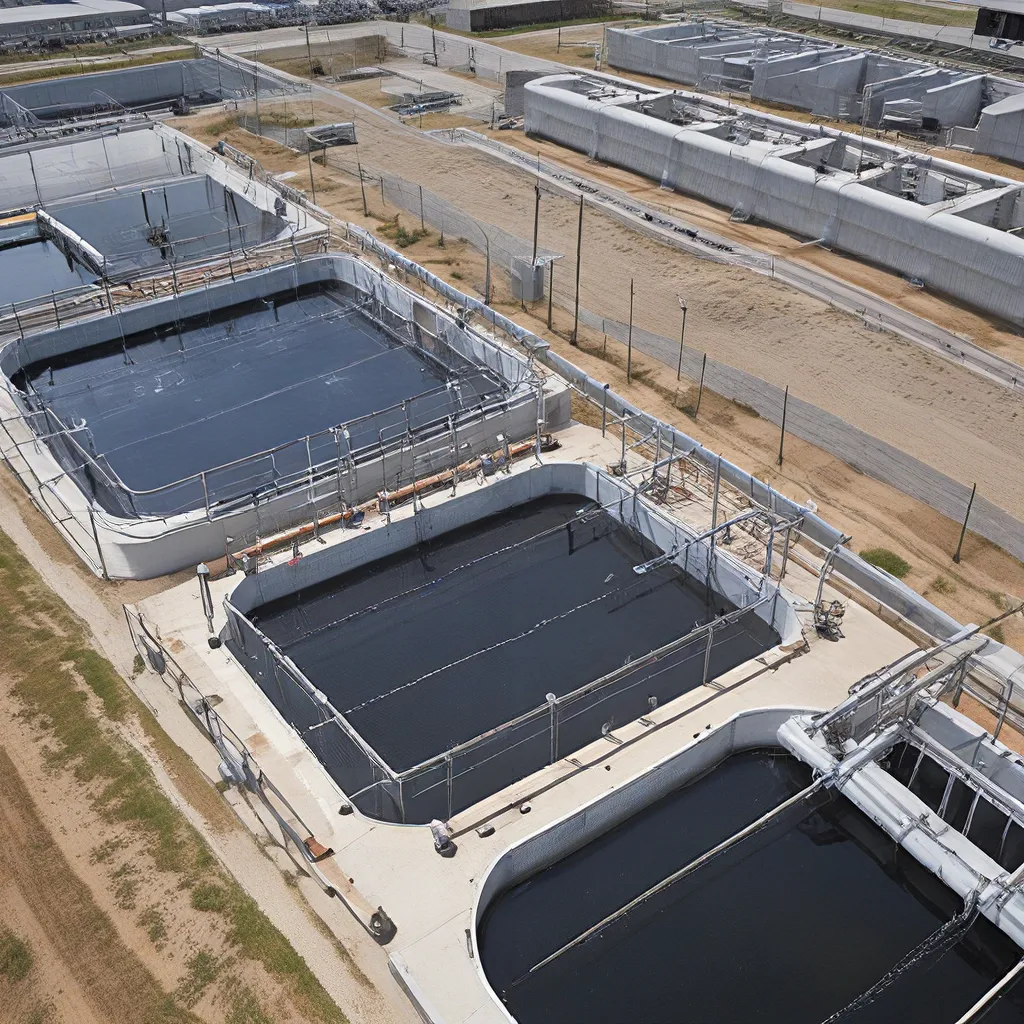
The Untapped Potential of Anaerobic Technology
As someone who has spent years working in the wastewater treatment industry, I’ve seen firsthand the incredible opportunities for improving energy efficiency and sustainability. Traditional aerobic treatment processes are undoubtedly effective, but they come with a significant energy cost that often leaves treatment plants struggling to keep up with rising utility bills.
Fortunately, a revolutionary new technology is poised to transform the way we approach wastewater treatment – the staged anaerobic fluidized bed membrane bioreactor (SAF-MBR). This innovative system, recently tested at the Silicon Valley Clean Water facility, has the potential to turn wastewater treatment plants into net-energy positive facilities.
Aerobic vs. Anaerobic: A Tale of Two Processes
To fully appreciate the benefits of the SAF-MBR, it’s important to understand the fundamental differences between aerobic and anaerobic wastewater treatment. Conventional aerobic processes, which rely on oxygen-loving microorganisms to break down organic matter, are energy-intensive, consuming anywhere from 0.4 to 0.65 kilowatt-hours per cubic meter (kWh/m³) or 1,500 to 2,500 kilowatt-hours per million gallons (kWh/MG). These high energy demands are a significant burden on treatment plant budgets and the environment.
In contrast, anaerobic systems like the SAF-MBR harness the power of oxygen-averse bacteria to accomplish the same task. These microorganisms thrive in the absence of oxygen, breaking down organic compounds and producing methane as a byproduct. This methane can then be captured and used to generate renewable energy, effectively transforming the treatment plant into a self-sustaining power plant.
The SAF-MBR: A Game-Changer in Wastewater Treatment
The staged anaerobic fluidized bed membrane bioreactor (SAF-MBR) is a cutting-edge technology that combines the energy efficiency of anaerobic treatment with the advanced filtration capabilities of a membrane bioreactor. This system was recently installed and tested at the Silicon Valley Clean Water facility, where it demonstrated remarkable performance.
At its design flow of 902 cubic meters per day (24,000 gallons per day), the SAF-MBR was able to achieve US secondary effluent standards while occupying a more compact treatment volume and footprint than typical aerobic systems. But the real game-changer is the energy efficiency and increased energy production of this anaerobic technology.
According to the research, a full-scale wastewater treatment plant employing an SAF-MBR for secondary treatment could produce a renewable energy surplus of 0.35 kilowatt-hours per cubic meter (1,320 kWh/MG). This means that the treatment plant would not only be able to meet its own energy demands, but it could also sell excess power back to the grid, effectively transforming it into a renewable energy power plant.
Overcoming Disinfection Challenges
One potential challenge with the SAF-MBR system is the presence of sulfides and ammonia in the effluent, which can interfere with traditional disinfection methods using chlorine or ultraviolet light. To address this issue, researchers have developed a specialized treatment process that combines sulfide oxidation by hydrogen peroxide, pathogen inactivation by UV irradiation, and chloramination.
This innovative approach has been shown to be capable of meeting disinfection and chlorine residual requirements established by California water reuse regulations. By overcoming these disinfection challenges, the SAF-MBR system can be effectively integrated into a comprehensive wastewater treatment and water reuse strategy.
The Potable Water Reuse Potential
The benefits of the SAF-MBR system don’t stop at energy efficiency and disinfection. Researchers have also explored its potential for potable water reuse, with promising results.
By testing various potable water reuse treatment processes on the SAF-MBR effluent, they were able to achieve potable reuse requirements while also reducing fouling of reverse osmosis membranes and decreasing the toxicity of disinfection byproducts in the final water. This is a significant advantage over conventional aerobic systems, which can often struggle with these issues.
The Future of Wastewater Treatment
As I’ve outlined, the staged anaerobic fluidized bed membrane bioreactor (SAF-MBR) represents a game-changing opportunity for the wastewater treatment industry. By harnessing the power of anaerobic technology, this innovative system has the potential to transform treatment plants from energy consumers into renewable energy producers, all while maintaining high treatment standards and unlocking new possibilities for water reuse.
Of course, as with any emerging technology, there are still ongoing research and evolving conclusions to be made. But the initial results from the Silicon Valley Clean Water facility are highly promising and suggest that the future of wastewater treatment is indeed “net-energy positive.”
As the industry continues to explore and refine these innovative approaches, I’m excited to see how Alpha Wastewater and other leading organizations can leverage this technology to maximize energy efficiency, reduce environmental impact, and deliver even more value to our clients. The possibilities are truly limitless.